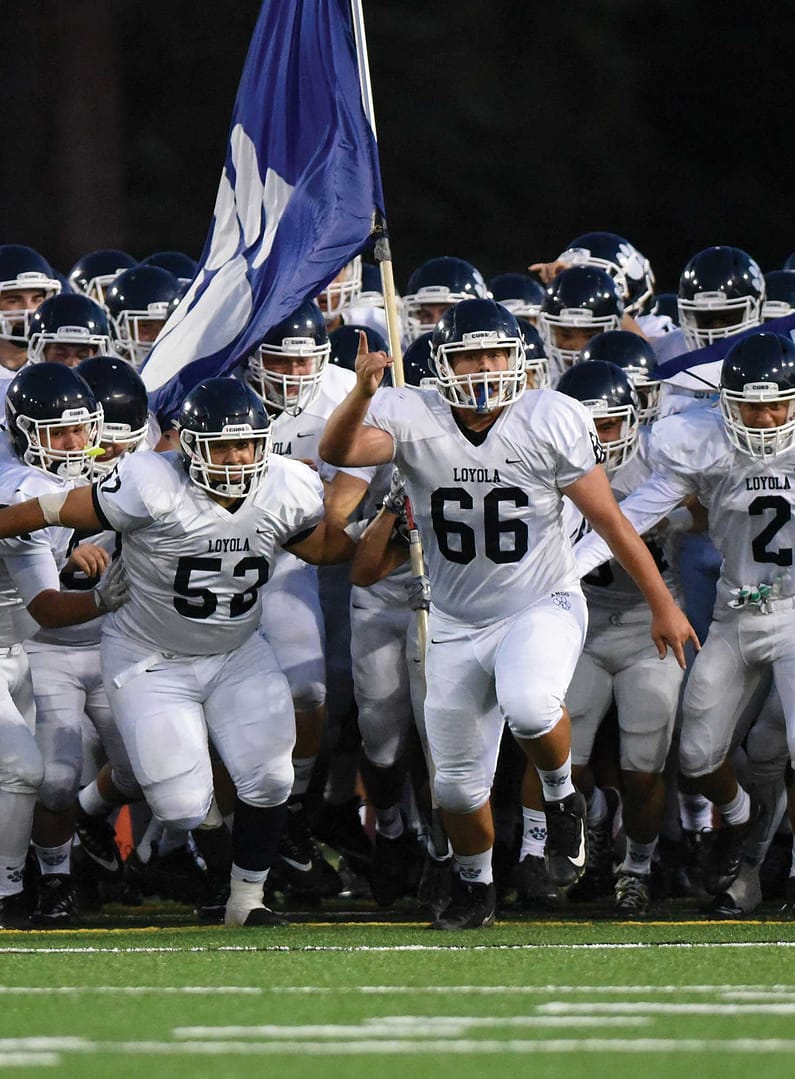College decisions are on the mind of every high school student-athlete. For many, the goal is to attend a Division I college, but some athletes are finding Division III colleges more appealing.
There are many differences between a Division I and a Division III sports program, but the main distinction is that Division III schools are prohibited from offering financial aid related to the applicant’s athletic ability. When a Division I athlete accepts a scholarship, he or she is receiving an education in exchange for his or her talents on the field or court. According to a NCAA survey, 76% of men’s Division I basketball players think they will play professionally, but only 1.2% make it to the NBA. The likelihood of playing in the professional leagues is slim even though the student-athlete attended a Division I school. Because Division III colleges provide a balanced program for their student-athletes and prepare them for multiple paths throughout life, going to a Division III school is becoming a more viable path.
Unlike Division III student-athletes, Division I student-athletes have intensely rigorous and time-consuming schedules. Tom Welsh ’14, a highly regarded Division I athlete who plays center for the UCLA Basketball, is enjoying his student-athlete experience. His daily training schedule and year-round commitment, however, is extremely demanding.
“We usually will practice 5 or 6 days out of the week,” Welsh said.
In addition to his hard work during his time on campus, Welsh, along with countless other Division I athletes, have extensive training throughout the year. The UCLA basketball team’s year-round commitment included a series of exhibition games in Australia. In contrast Billy Morales ’12 played outfield for the Division III Pomona-Pitzer baseball team. While still remaining competitive, the small liberal arts school located in Claremont, California, allows for a more flexible schedule and encourages the development of the student-athlete on and off the field. Morales played in a competitive summer league after both his freshman and sophomore year but after his junior year he opted to attend the summer Architecture and Urban Design program at UCLA instead. As time progresses, more and more student-athletes are finding that the balanced Division III program is a better fit for them.
Some student-athletes are starting to realize that the short-term sacrifices made in order to play for a Division I school may not be worth it for their futures. Michael McAdoo, who played on the football team at the Division I University of North Carolina from 2008-2010, filed a class-action lawsuit over fake classes. McAdoo claimed that players were cheated out of a legitimate education while playing for the prestigious Division I team. Almost immediately after he arrived to college, he was urged to major in Exercise Sport Science, Communication, or African-American Studies.
The lawsuit said, “When Mr. McAdoo asked why he should not pursue other majors, he was told these three were the only majors that would accommodate his football practice and playing schedule, and that the football program had ‘relationships’ with professors in those departments.” On the contrary, another Loyola alumnus, Tommy Bergjans ’11, was a starting pitcher for a small Division III school called Haverford College located in the Philadelphia suburbs. This tiny school with a student population of about 1,200 is now a pipeline to Major League Baseball’s front offices, as Bergjans was drafted in the eighth round of the 2015 Major League Baseball’s draft by another Haverford graduate, Josh Byrnes, the Los Angeles Dodgers’ Senior Vice President of baseball operations. If needing additional advice on his baseball life, he could turn to Thad Levine, the current General Manager of the Minnesota Twins and a fellow Haverford college alumnus. Supposing that Bergjans does not make it to the major leagues or that he decides he no longer wants to play baseball, he will always have his undergraduate degree in economics and access to vast network of successful alumni to help him on any path throughout his life . The experiences these graduates had at their small Division III school prepared them for their lucrative careers.
Overall, Division III colleges have a balanced program that allow their student-athletes to pursue opportunities that accommodate their next stage in life. Division I schools have many alumni that are doing amazing in their professional leagues, but Division III schools produce students who are prepared to excel in their professional life after sports.







Comments are closed.